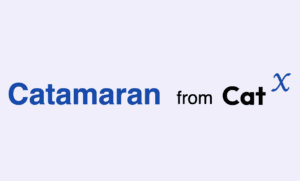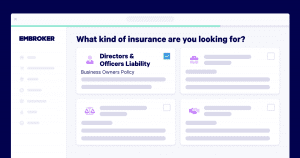Australia’s top life insurance providers in 2022

Type
Payment type
Coverage
Age eligibility
Life cover
Lump sum
Also called death cover, provides payout upon the policyholder’s death
18 to 79
Total and permanent disability (TPD) insurance
Lump sum
Medical, rehabilitation, and living costs if policyholder becomes permanently disabled
18 to 64
Trauma insurance
Lump sum
Expenses incurred while recovering from a major illness
18 to 64
Income protection
Monthly benefit of up 75% of regular salary
Living expenses if the policyholder is unable to work due to illness or injury
18 to 64
Accidental death/injury cover
Lump sum or income protection
Provides payout in the event the policyholder dies unexpectedly or suffers an accidental injury
18 to 64
Funeral insurance
Lump sum
Up $30,000 coverage for funeral expenses
18 to 79
What factors should Australians consider when choosing a life insurance policy?
To find the policy that best fits their needs, experts advise those who are looking for the right life insurance plan to review and compare all options available. Often, the best ones are those that suit their personal requirements. These are some of the most important factors Australians need to consider when choosing a life insurance policy:
1. Features and benefits
Each life insurance plan comes with built-in features and benefits, which vary from insurer to insurer. The key to finding the right policy, according to industry experts, is to review the product disclosure statement (PDS). Here are some benefits Australians may want to keep an eye out for, according to North Sydney-based comparison website Life Insurance Direct.
Benefit
How it works
Terminal illness benefit
Depending on the insurance provider, this benefit pays out 100% of the death cover in advance if the policyholder is diagnosed with a terminal illness or given less than 12 to 24 months to live. Generally, the diagnosis needs to be confirmed by two independent medical specialists.
Funeral advancement benefit
This benefit ranges from $10,000 to 10% of the sum insured. To receive an advance payout, the policyholder’s family must provide the insurer a valid death certificate and full claim forms.
Financial advice benefit
For those who need to seek advice from a financial advisor, this benefit reimburses the cost up to a specific range which may vary between $2,000 and $5,000 depending on the insurance company.
Future insurability benefit
This allows the policyholder to increase their level of cover without the need to provide additional medical information. This can be done after a significant life event, including marriage, getting a new job, birth of a child, or taking out a mortgage.
Premium freeze option
This allows the policyholder to freeze their premiums, so instead of their stepped premiums increasing each year, their benefit amount will decrease.
Indexation
This benefit enables the policy to keep up with inflation. Typically, the level of cover rises by set percentage between 3% and 5%$ or the CPI, depending on which is greater.
Interim cover
This provides a lump-sum payment should the policyholder die because of an accident during their policy assessment. The benefit is usually the lesser of $1 million or the sum insured at the time of application.
2. Exclusions
Experts suggest that those planning on purchasing life insurance to be mindful of the exclusions, which can also be found in the PDS. One example of what’s not typically covered, at least in the first 13 months after the policy was bought, is suicide. Death or injury while taking part in a criminal or illegal activity, as well as those resulting from alcohol and drug abuse are likewise excluded. Some insurers also do not provide coverage for loss of life or injuries from extreme sports and other risky hobbies.
3. Premium prices
Another important factor when deciding which policy to choose is whether one can afford paying premiums not just at present but also in the future.
“If you’re looking for short-term affordability, a stepped premium style might be best for you,” comparison services provider ComparingExpert wrote on its website. “On the other hand, if you’re able to start with higher premiums, which don’t increase every year due to your age, then a company offering level premiums might be better.”
4. Claims accepted rates
This metric shows the percentage of claims an insurer has accepted for payment out of all claims that were decided. Another factor life insurance buyers need to pay attention to is the average claim time, which indicates how long it takes an insurer to decide whether to accept a claim or not.
Read more: APRA and ASIC release latest life insurance claims and dispute figures
5. Financial stability
Financial strength ratings are given by independent entities such as A.M. Best, Standard & Poor’s, and Moody’s. A company’s score indicates its ability to meet financial obligations, including its capacity to pay claims in the future.
How much does life insurance cost?
Premium prices of a life insurance policy depend on a range of factors that determine how likely a person will make a claim. These include their age, smoking status, and general health condition. The level of cover, policy features, and premium structure – stepped, level, or hybrid – also affect the cost of life insurance.
To work out home much coverage a person needs, the comparison website Finder recommends individuals to take a closer look at their lifestyle and financial responsibilities. Among the factors life insurance buyers need to consider are their income, outstanding debts, living expenses, coverage period, dependents, and assets.
Read more: Life insurance industry showing signs of recovery – APRA
Top life insurance providers in Australia
There are 27 insurers and 11 friendly societies registered with the Australian Prudential Regulation Authority (APRA) that can offer Aussies a range of life insurance policies. Of these, the seven largest insurance companies account for almost 90% of the overall market share.
Here are the country’s top life insurance providers. The list is arranged by the company’s share of the market. Claims statistics are for life cover policies taken out through financial advisers and brokers calculated using an online tool from the Australian Securities & Investments Commission’s (ASIC) consumer channel MoneySmart. Financial strength ratings are taken from Standard & Poor’s (S&P).
1. TAL Life Limited
Market share: 27%
Claims accepted rate: 95.8%
Financial strength rating: A+
Policy name
Included benefits
Accelerated Protection
Death benefit: Benefit amount is paid after the policyholder dies
Terminal Illness benefit: Early payment of the benefit amount if policyholder is terminally ill
Advanced payment benefit: Advanced payment of 10% of the benefit amount, up to a maximum of $25,000 as soon as death certificate or medical certificate confirming death is received
Repatriation benefit: Advanced payment benefit capped at a maximum of $35,000 if policyholder dies overseas
2. AIA Australia Limited
Market share: 18.9%
Claims accepted rate: 96.6%
Financial strength rating: A+
Policy name
Built-in benefits
Priority Protection Life Cover
Death benefit: Pays a lump sum equal to the sum insured if policyholder passes away
Terminal illness: Pays the sum insured in advance if policyholder is diagnosed with a terminal illness
Final expenses: Advances 10% of the sum insured up to a maximum of $25,000 to assist in dealing with immediate financial expenses whilst AIA assesses a death claim
Complimentary family final expenses: Pays the lower of $20,000 or 10% of the sum insured if a policyholder’s child passes away or is diagnosed with a terminal illness between the ages of 2 and 17
Guaranteed future insurability: Allows policyholder to increase the sum insured for significant personal or business events before age 55, without providing further evidence of health or insurability
Benefit indexation: Automatically increases the sum insured at the policy anniversary each year by the higher of the CPI increase and 5%, and adjusts premiums accordingly
Premium freeze: Allows policyholder to keep their premium the same for the following year by reducing the sum insured amount
Premium and cover pause benefit: Allows policyholders to pause premiums and cover for a period of 3, 6 or 12 months in certain circumstances for eligible policies
Financial planning reimbursement: Pays up to $3,000 to reimburse financial planning advice obtained within 12 months of a claim payment across all policies
Complimentary interim accidental death cover: Pays a lump sum in the event of accidental death occurring while the application is being assessed, applies for up to 90 days from the date of the signed application
Accommodation benefit: Reimburses the accommodation costs incurred by immediate family members while policyholder is confined to a bed more than 100km from their usual place of residence (up to $250 per day for up to 30 days)
Counselling benefit: Pays $200 for each session of grief counselling for the policyholder or immediate family member, up to a maximum total value of $1,200 per life insured
3. Zurich
Market share: 14.1%
Claims accepted rate: 98.3%
Financial strength rating: A+
Policy name
Built-in benefits
Wealth Protection Death Cover
Death & terminal illness benefit: Lump sum payment on death or diagnosis of terminal illness
Advancement for funeral expenses: Advance payment of $15,000 towards funeral expenses
Accidental injury benefit: Advance payment of part or all of the death benefit if the life insured suffers a specified accidental injury
Future insurability business benefit: Allows an increase in cover without underwriting if certain business events occur
Inflation protection: Cover will increase every year even without health assessment, unless declined by the policyholder
Future insurability: Allows an increase in cover without underwriting on certain life events
Accommodation expenses: Reimbursement of some travel and accommodation expenses for an immediate family member who travels more than 100km from home to be with the life insured who is confined to bed and requires full-time care
Financial planning advice: Reimburses the cost of advice following a claim payment, up to $3,000, benefit increases to $6,000 if death benefit has been in place for five years or more
Interim cover: Puts some accident cover in place as soon as cover is applied for, as set out in the interim cover terms
4. MLC Limited
Market share: 10.9%
Claims accepted rate: 96.8%
Financial strength rating: A+
Policy name
Included benefits
MLC Insurance Life Cover
Best doctors service: Provides access to some of the leading medical practitioners in the world
Accidental injury benefit: Pays a lump sum benefit if policyholder is injured due to an accident, which results in the total and permanent loss of hands, feet, and eyes within 6 months of the accident
Advance death benefit: Pays a benefit of $20,000 from the life cover lump sum to help loved ones pay for policyholder’s funeral
Financial planning benefit: Reimburses part of the costs charged by a qualified financial adviser for financial planning services, if the lump sum benefit paid is $100,000 or more
5. Resolution Life Australasia (AMP Life Limited)
Market share: 8.4%
Claims accepted rate: 97.1%
Financial strength rating: A-
In November 2021, Resolution Life acquired full ownership of AMP Life. The company is currently closed to new policies, according to Victoria-based brokerage firm Insurance Watch.
6. BT Financial Group
Market share: 5.6%
Claims accepted rate: 98.1%
Financial strength rating: A+
Policy name
Included benefits
Term Life Protection Plans
Death benefit: Pays a benefit in the event of the insured person’s death
Terminal illness benefit: Pays a benefit, equal to the amount of the death benefit at that time the insured person has a terminal illness
Future insurability benefit: Allows policyholder to increase the death, TPD, and living benefit sum insured on the occurrence of one of the specified personal or business events without further medical underwriting
7. MetLife Insurance
Market share: 4.8%
Claim accepted rate: Finalised claims too small to provide a reliable result
Financial strength rating: A+
Policy name
Included benefits
MetLife Protect
Death benefit: Pays out 100% of the life cover amount upon the death of the life insured
Terminal illness benefit: Pays out 100% of the life cover amount if a terminal illness is likely to result in death of the life insured within 24 months
Immediate expenses benefit: Advances $30,000 of the life cover amount as an upfront payment as soon as death certificate is received
Indexation: Increases the life cover amount by the greater of CPI and 5% unless policyholder opts out
Involuntary unemployment premium waiver benefit: If the life insured loses their job due to involuntary unemployment, they can request premiums to be waived for up to three months while they are not working
Life events increases feature: Allows the policyholder to apply to increase life cover amount without further medical underwriting in the event of specified personal life and business events
Nomination of beneficiaries: Allows the policyholder to nominate up to five beneficiaries on a non-superannuation policy to receive the payment if a benefit is payable due to the life insured’s death.






